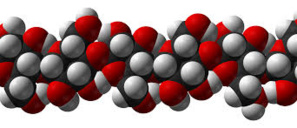Renewable fuels and antibiotic drugs can be sourced in the future from a new type of cellulose in bacteria that has been recently discovered and identified by a group of scientists associated with the U.S. Stanford University.
One of the best studied bacteria -- E. coli, was the source of the extraction of the new modified cellulose termed pEtN. This was found through a study by the Stanford researchers and this discovery was published and in the latest version of the journal Science. E. coli bacteria encompasses a large group of bacteria and tends to cause various illness in humans such as diarrhea, urinary tract infections, respiratory illness, pneumonia and other ailments.
Other sources of cellulose like the switchgrass or poplar for the production of ethanol for fuels were enhanced by some properties of the new cellulose. This was discovered by Lynette Cegelski, an assistant professor of chemistry at Stanford and senior author of the research.
Despite the fact that the newly discovered cellulose is not able to create crystals and it also gets dissolved in water more easily than others, researchers are off the opinion that the new cellulose is converted into glucose in a much easier manner. This is the starting material for producing ethanol and the cost of that process would be much lower than conventional processes.
Typically, sugary kernels of corn are used for production of ethanol and its production contends with corn as a food source.
While not competing with food source, extraction of ethanol from cellulose base includes a process of extraction from the entire plant instead of just the kernels. Therefore, the new method of ethanol production compared to conventional way of production is quite different.
With respect to environmental benefits and higher economic efficiency, the modified cellulose with its newly found properties is much ahead compared to the traditional cellulose.
In terms of the medicinal value of the new modified cellulose, its property to mature and surround bacterial colonies that form the ingredient of some infections, can be put to use for the treatment of such infections. This would be possible after testing on mice of the new method proves to inhibit the production of those infection causing bacteria.
The genes and molecules that contribute to the birth of the new cellulose have also been examined in addition to its structure by Cegelski and her team.
During the process of the production of the new cellulose, the researchers found that it was possible to modify the new cellulose.
According to Cegelski, it would be possible to produce more of the new cellulose if they are grown on a large scale which could be possible for plant biologists who can insert genes into it so that the modified cellulose is able to be transferred from bacteria into plants.
According to the research, there can be multiple areas of interest and d application of the new cellulose such as in the biomedical, material or basic chemical fields, in case there is availability of a large amount of cellulose.
(Source:www.xinhuanet.com)
One of the best studied bacteria -- E. coli, was the source of the extraction of the new modified cellulose termed pEtN. This was found through a study by the Stanford researchers and this discovery was published and in the latest version of the journal Science. E. coli bacteria encompasses a large group of bacteria and tends to cause various illness in humans such as diarrhea, urinary tract infections, respiratory illness, pneumonia and other ailments.
Other sources of cellulose like the switchgrass or poplar for the production of ethanol for fuels were enhanced by some properties of the new cellulose. This was discovered by Lynette Cegelski, an assistant professor of chemistry at Stanford and senior author of the research.
Despite the fact that the newly discovered cellulose is not able to create crystals and it also gets dissolved in water more easily than others, researchers are off the opinion that the new cellulose is converted into glucose in a much easier manner. This is the starting material for producing ethanol and the cost of that process would be much lower than conventional processes.
Typically, sugary kernels of corn are used for production of ethanol and its production contends with corn as a food source.
While not competing with food source, extraction of ethanol from cellulose base includes a process of extraction from the entire plant instead of just the kernels. Therefore, the new method of ethanol production compared to conventional way of production is quite different.
With respect to environmental benefits and higher economic efficiency, the modified cellulose with its newly found properties is much ahead compared to the traditional cellulose.
In terms of the medicinal value of the new modified cellulose, its property to mature and surround bacterial colonies that form the ingredient of some infections, can be put to use for the treatment of such infections. This would be possible after testing on mice of the new method proves to inhibit the production of those infection causing bacteria.
The genes and molecules that contribute to the birth of the new cellulose have also been examined in addition to its structure by Cegelski and her team.
During the process of the production of the new cellulose, the researchers found that it was possible to modify the new cellulose.
According to Cegelski, it would be possible to produce more of the new cellulose if they are grown on a large scale which could be possible for plant biologists who can insert genes into it so that the modified cellulose is able to be transferred from bacteria into plants.
According to the research, there can be multiple areas of interest and d application of the new cellulose such as in the biomedical, material or basic chemical fields, in case there is availability of a large amount of cellulose.
(Source:www.xinhuanet.com)






